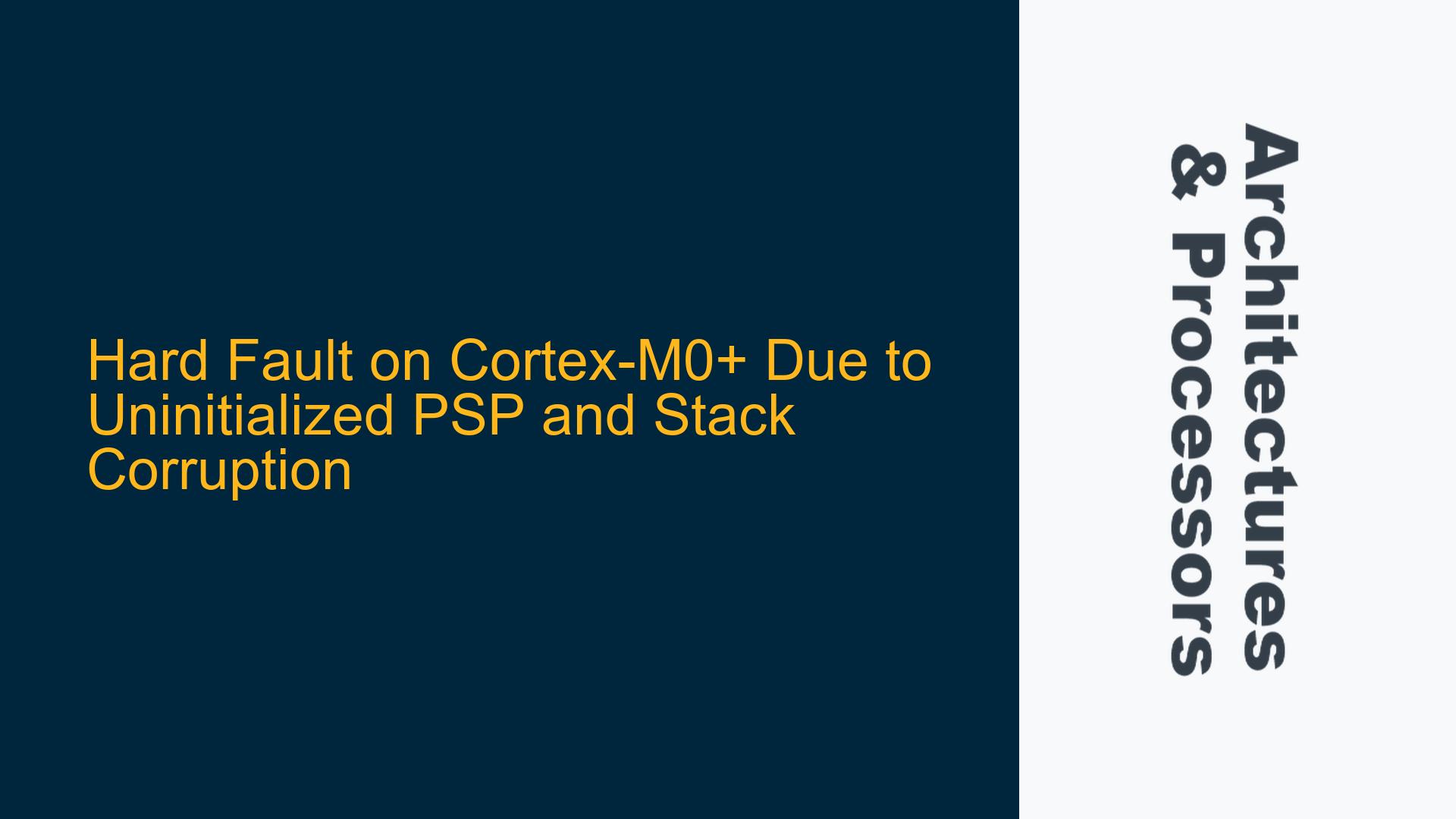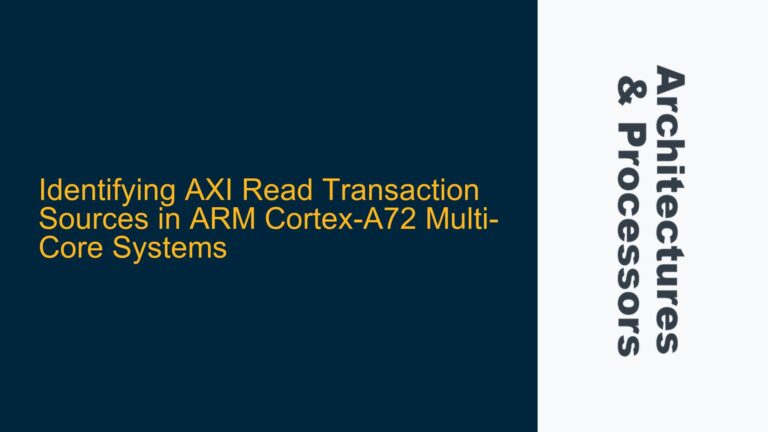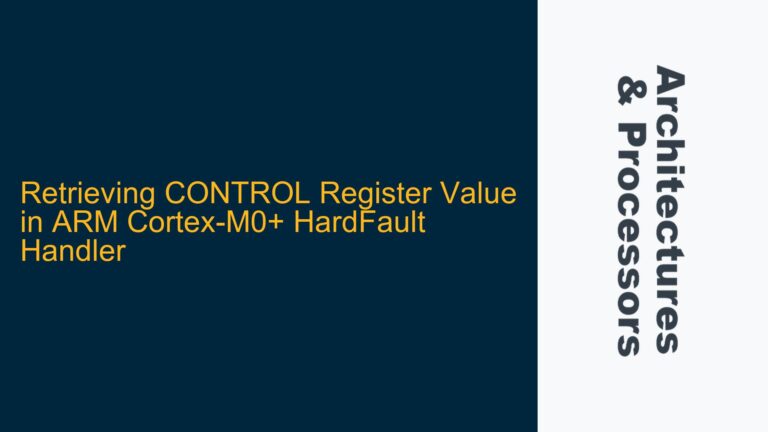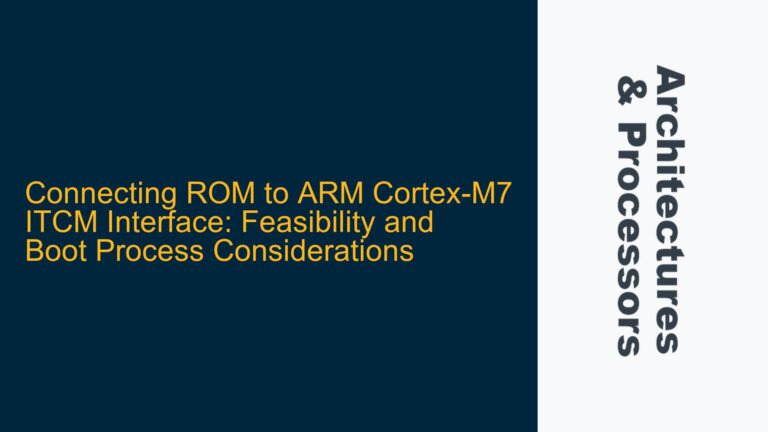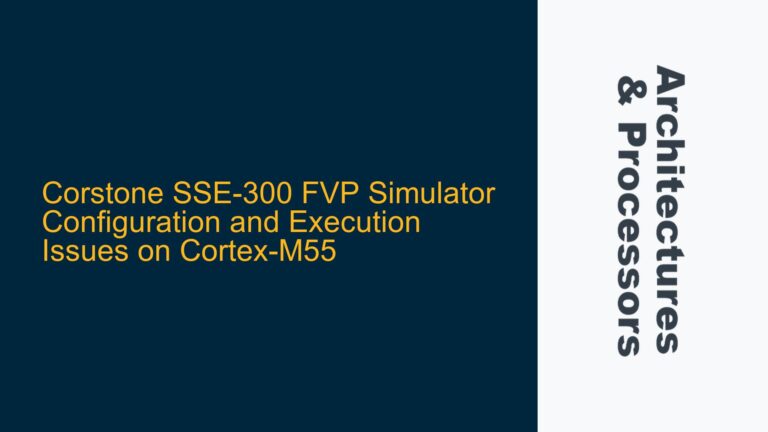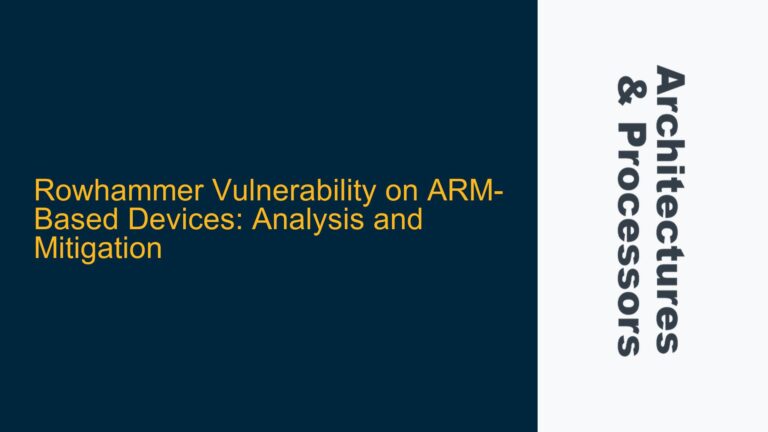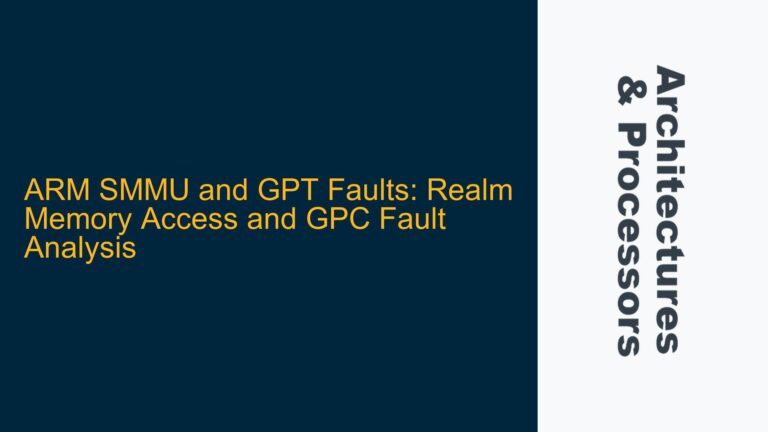ARM Cortex-M0+ Hard Fault During Interrupt Handling and EEPROM Access
The issue at hand involves a hard fault occurring on an ARM Cortex-M0+ microcontroller (specifically the STM32L0x1 series) during an interrupt service routine (ISR) that attempts to copy data to EEPROM. The hard fault persists even when the EEPROM write operation is removed, suggesting a deeper underlying issue. The primary suspect is stack corruption, potentially exacerbated by an uninitialized Process Stack Pointer (PSP). The Cortex-M0+ architecture, being a simplified version of the Cortex-M series, has limited fault detection capabilities, making debugging such issues particularly challenging. The fault manifests as an unexpected crash, and the provided register dump indicates that the PSP is set to an invalid value (-4), which is a strong indicator of stack-related problems.
The Cortex-M0+ processor uses two stack pointers: the Main Stack Pointer (MSP) and the Process Stack Pointer (PSP). The MSP is used by default in bare-metal applications, while the PSP is typically used in operating system contexts. However, even in bare-metal applications, improper handling of the PSP can lead to hard faults. In this case, the PSP is not explicitly initialized, and its value is observed to be -4 during debugging, which is an invalid memory address. This suggests that the stack pointer is either corrupted or not properly set up before entering the ISR.
The hard fault could also be triggered by other factors, such as stack overflow, improper interrupt prioritization, or incorrect memory access. However, the uninitialized PSP is the most immediate concern. The Cortex-M0+ architecture does not provide hardware-based stack overflow detection, so stack corruption can go unnoticed until a hard fault occurs. Additionally, the lack of a Memory Protection Unit (MPU) in the Cortex-M0+ means that memory access violations are not caught early, further complicating the debugging process.
Uninitialized PSP and Stack Corruption in Bare-Metal Applications
The root cause of the hard fault appears to be related to the uninitialized PSP and potential stack corruption. In bare-metal applications, the PSP is typically not used unless explicitly configured. However, if the PSP is inadvertently accessed or modified, it can lead to unpredictable behavior. The PSP is part of the Cortex-M0+ processor’s register set and is used to manage the stack for thread mode operations. When the CONTROL register is set to zero, the processor uses the MSP by default. However, if the PSP is accessed without proper initialization, it can lead to invalid memory accesses and hard faults.
The PSP value of -4 observed during debugging is a clear indication of an uninitialized or corrupted stack pointer. This value is not a valid memory address and suggests that the stack pointer has been overwritten or improperly set. The Cortex-M0+ architecture does not automatically initialize the PSP, so it is the responsibility of the developer to ensure that the PSP is set to a valid memory address if it is used. In this case, the PSP is not explicitly used, but its corrupted value indicates that the stack may have been overwritten or improperly managed.
Stack corruption can occur due to several reasons, including stack overflow, improper use of local variables, or incorrect interrupt handling. In this scenario, the stack corruption is likely caused by one of the following factors:
-
Stack Overflow: The stack may have grown beyond its allocated memory region, overwriting other critical data structures or the PSP itself. This can happen if the stack size is insufficient for the application’s needs or if there is excessive use of local variables or function call nesting.
-
Improper Interrupt Handling: The ISR may be using more stack space than anticipated, leading to stack corruption. This can happen if the ISR is not properly optimized or if it makes excessive use of local variables.
-
Memory Access Violations: The application may be accessing invalid memory addresses, leading to stack corruption. This can happen if there are bugs in the code that result in out-of-bounds memory accesses or if there are issues with memory alignment.
-
Uninitialized Variables: The use of uninitialized variables can lead to unpredictable behavior, including stack corruption. This can happen if local variables are not properly initialized before use.
Debugging and Resolving PSP Initialization and Stack Corruption Issues
To resolve the hard fault issue, the following steps should be taken to debug and fix the problem:
-
Initialize the PSP: Even though the PSP is not explicitly used in the application, it should be initialized to a valid memory address to prevent any potential issues. This can be done by setting the PSP to a valid RAM address during the startup code. For example, the following code snippet can be used to initialize the PSP:
__asm volatile ("LDR R0, =0x20001000"); // Load a valid RAM address into R0 __asm volatile ("MSR PSP, R0"); // Set PSP to the address in R0This ensures that the PSP is set to a valid memory address, even if it is not used.
-
Check Stack Size and Usage: Verify that the stack size is sufficient for the application’s needs. The stack size can be adjusted in the linker script or startup code. Additionally, minimize the use of local variables in ISRs and ensure that function call nesting is kept to a minimum to reduce stack usage.
-
Enable Stack Overflow Detection: Although the Cortex-M0+ does not have hardware-based stack overflow detection, software-based methods can be used to monitor stack usage. For example, a guard zone can be created at the end of the stack memory region, and the application can periodically check if the guard zone has been overwritten. If the guard zone is corrupted, it indicates a stack overflow.
-
Analyze the Fault Registers: The Cortex-M0+ provides several fault registers that can be used to diagnose the cause of a hard fault. These include the Hard Fault Status Register (HFSR), the Program Status Register (PSR), and the Stack Pointer (SP). By analyzing these registers, the exact cause of the hard fault can be determined. For example, the HFSR can indicate whether the fault was caused by a bus error, a memory management fault, or an usage fault.
-
Use a Debugger to Inspect the Stack: A debugger can be used to inspect the stack memory and identify any corruption. The debugger can also be used to set breakpoints and step through the code to identify the exact point where the stack corruption occurs.
-
Review Interrupt Priorities: Ensure that interrupt priorities are correctly configured and that higher-priority interrupts do not preempt lower-priority interrupts in a way that could lead to stack corruption. The Cortex-M0+ uses a fixed priority scheme, so it is important to ensure that interrupts are prioritized correctly.
-
Check for Memory Access Violations: Use the debugger to check for any invalid memory accesses that could lead to stack corruption. This includes checking for out-of-bounds array accesses, unaligned memory accesses, and other memory-related issues.
-
Validate EEPROM Access Code: Although the hard fault persists even without EEPROM writes, it is still important to ensure that the EEPROM access code is correct. This includes verifying that the EEPROM address is valid and that the write operation is properly synchronized with the EEPROM controller.
By following these steps, the hard fault issue can be systematically debugged and resolved. The key is to ensure that the PSP is properly initialized and that the stack is not corrupted due to overflow, improper interrupt handling, or memory access violations. Additionally, using the Cortex-M0+ fault registers and a debugger can provide valuable insights into the root cause of the issue.
In conclusion, the hard fault on the Cortex-M0+ platform is likely caused by an uninitialized PSP and stack corruption. By initializing the PSP, checking stack usage, and analyzing the fault registers, the issue can be resolved. Additionally, proper interrupt handling and memory access validation are essential to prevent stack corruption and ensure reliable operation of the embedded system.
